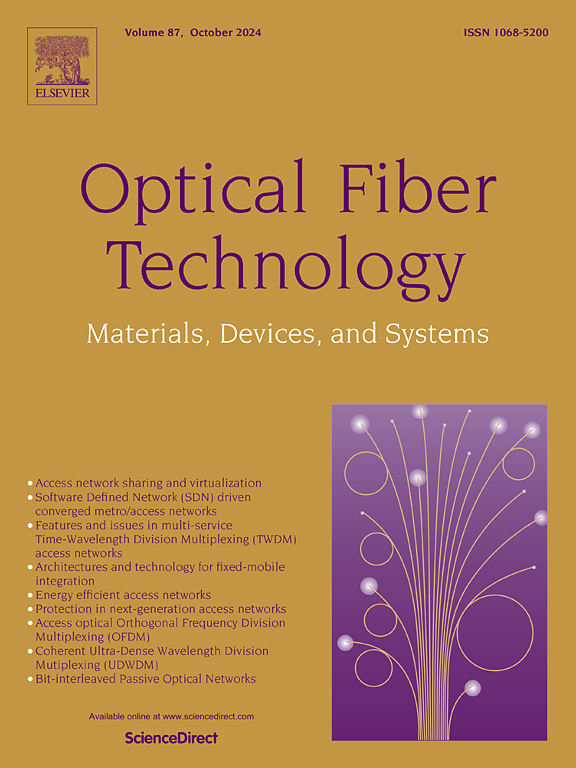Annular micro-nano optic fiber sensor based on α-Fe2O3@SiO2@CS imprinting for Cu(II) ion detection
IF 2.6
3区 计算机科学
Q2 ENGINEERING, ELECTRICAL & ELECTRONIC
引用次数: 0
Abstract
Sensors for the rapid and easy detection of copper ions (Cu2+) are crucial in drinking water and healthcare. However, this research is still challenging, such as more complicated sample pretreatment and longer detection time. In this paper, a highly sensitive optic fiber sensor for trace detection of Cu2+ in aqueous solution is proposed. Based on the principle of intermodal interference, the coating method of surface functionalization of functional groups is adopted, and the single-mode fiber (SMF) is bent to form an annular structure to enhance the interference, and the cone pulling machine is used to perform cone pulling treatment before coating a uniform layer of α-Fe2O3@SiO2@CS nanocomposite imprinted material. The amino and hydroxyl groups have specific recognition functions for Cu2+ and can chelate with Cu2+, thus changing the refractive index of the material, which in turn makes the interference spectrum shifted. Furthermore, Cu2+ is chosen as the template ion to make ion-imprinted materials, and the trace detection of Cu2+. The results showed that the interference spectrum was red-shifted with the increase of Cu2+ concentration in the range of 0–1 μM with a concentration dependence coefficient of 3.35 nm/log·μM, and the maximum detection sensitivity of Cu2+ reached 1232.52 nm/μM with a good linearity of 0.994. The selectivity of Cu2+ was more than 70 times that of other ions. In addition, the sensor has the advantages of fast response time, high stability, good reproducibility, simple fabrication and low cost.
求助全文
约1分钟内获得全文
求助全文
来源期刊

Optical Fiber Technology
工程技术-电信学
CiteScore
4.80
自引率
11.10%
发文量
327
审稿时长
63 days
期刊介绍:
Innovations in optical fiber technology are revolutionizing world communications. Newly developed fiber amplifiers allow for direct transmission of high-speed signals over transcontinental distances without the need for electronic regeneration. Optical fibers find new applications in data processing. The impact of fiber materials, devices, and systems on communications in the coming decades will create an abundance of primary literature and the need for up-to-date reviews.
Optical Fiber Technology: Materials, Devices, and Systems is a new cutting-edge journal designed to fill a need in this rapidly evolving field for speedy publication of regular length papers. Both theoretical and experimental papers on fiber materials, devices, and system performance evaluation and measurements are eligible, with emphasis on practical applications.
 求助内容:
求助内容: 应助结果提醒方式:
应助结果提醒方式:


